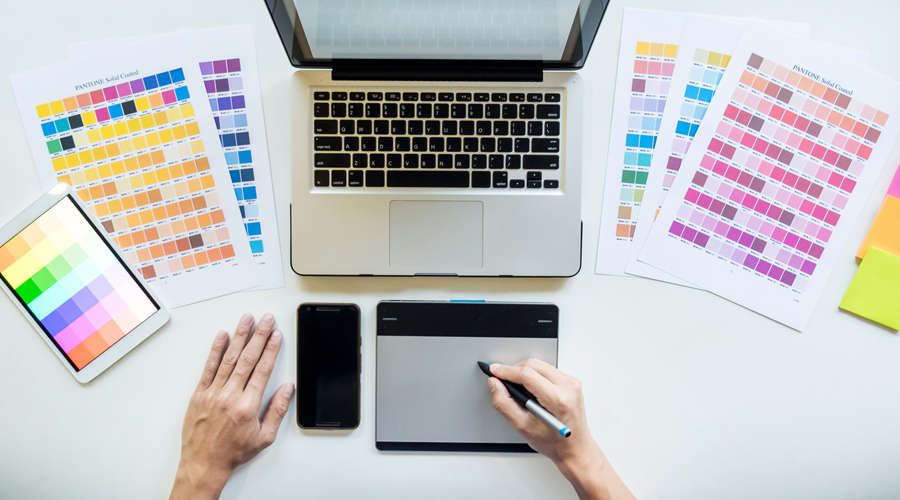Have you ever wondered about the importance of color in design? The answer is simple: it evokes emotions that we often cannot control. Colors are like music; when you hear an inspirational song, it makes you want to give twice the effort. But if you listen to a “colder” melody, your mood might decline.
Understanding the importance of color in design means mastering the power to convey emotions and influence the perception of reality. After all, color is what brings our world to life.
One of the reasons why we highlight the importance of color in graphic design is because it projects various shades through reflected light.
Objects don’t have colors of their own; instead, each one has the ability to absorb or reflect the light present in the environment.
So, the light that couldn’t be absorbed by an object is reflected as a wavelength of light that our eyes perceive and send to the brain. The brain then interprets each wavelength as a “different color.”
Hence, the significance of color in design emerges. We call that reflected light, which represents a wavelength, color.
Understanding the importance of colors in your designs will enable you to make a more harmonious and conscious choice that helps convey the message and emotion you want to your viewers. This is one of the essential skills of a graphic designer!
Fabián Moncada, a publicist and professor, explains the importance of color in graphic design:
“Colors produce different emotions and influence our perception of reality. Primary and secondary colors, in all their combinations, have the power to convey a message or emotion, as well as convey the personality of a company.”
There are three models of the color wheel to represent different color modes:
- Classic model (RYB): It is the traditional coloring, less used in modern designs.
- Classic Model (RYB): It is the traditional coloring, less used in modern designs.
- Additive Model (RGB): Used to create colors produced by light, such as on computer monitors, TV screens, or phones.
The colors in your graphic composition will also influence the likelihood of viewers remembering you later. This is why designers dedicate so much time to selecting the right colors, as well as logos, printed materials, and other branding elements.
Believe it or not, colors can set you apart from the crowd, which is particularly important in digital web design, and any company navigating the online environment knows this.











